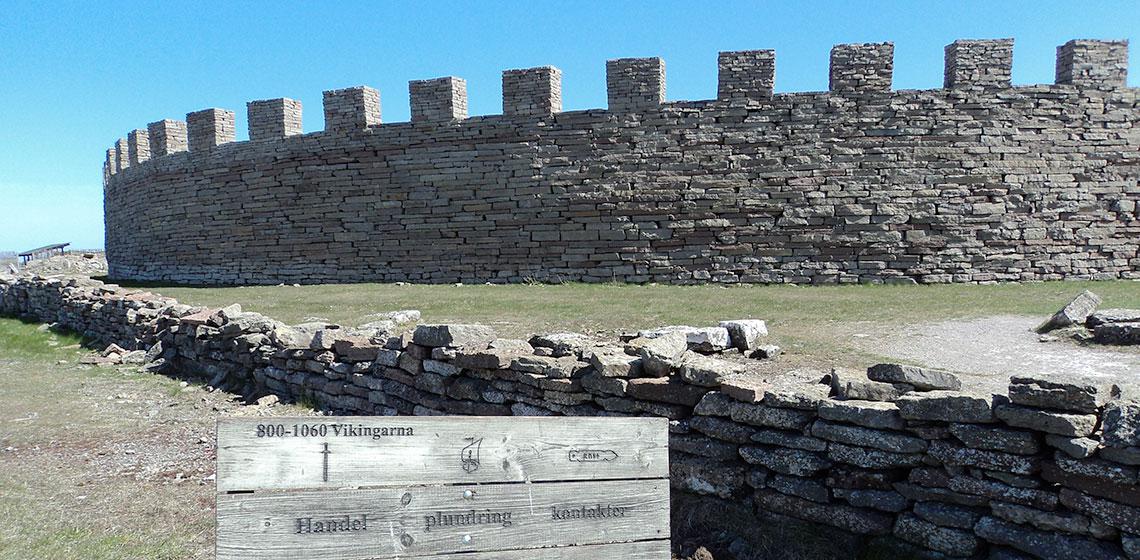Eketorps Borg (SE)

The island Öland is situated 400 kilometres south of Stockholm, between the Swedish mainland and Gotland. It is 137 kilometres long, and maximum 16 wide. Its favourable position in the Baltic Sea has lead to active occupation – it is rich in archaeological artefacts. Spread across the island, there are 17 so called ring forts dating to the pre medieval period.
The island Öland is situated 400 kilometres south of Stockholm, between the Swedish mainland and Gotland. It is 137 kilometres long, and maximum 16 wide. Its favourable position in the Baltic Sea has lead to active occupation – it is rich in archaeological artefacts. Spread across the island, there are 17 so called ring forts dating to the pre medieval period. One of these, Eketorp, was excavated 1964-1973 and subsequently restored. It originally knew three occupation phases, 300-400 AD, 400-650 AD and finally 1170-1240 AD. The whole of Southern Öland is a UNESCO World heritage Site.
The museum was built from 1978 onwards by the State Archaeological Service (Riksantikvariämbetet). The indoor museum, a modern building, camouflaged as a small series of reconstructed houses, was inaugurated by King Carl XVI Gustaf in 1984. Having the indoor museum – a modern environment – inside a few “Iron Age” houses works alienating. One would have done better by having this museum with original finds outside the fort, near the visitor centre. The presentation has little in common with what is presented elsewhere in the fort.
Riksantikvariämbetet also managed the archaeological open-air museum up until 2002 when the local county museum (Kalmar Läns Museum) took over. Eketorp is supported by the local community as well as by European Structural Funds.
Goal at the fort is to ‘revive’ the Iron Age and Middle Ages by means of the reconstructed houses, guided tours, roll play, school programmes, experiments and demonstration of crafts. First visitors arrived in 1978 – by that being one of the oldest such sites in Sweden and one of those with most archaeologists involved. Eketorp has been a site of heavy debate about how popular science can be presented; in some respects that debate continues until present day.
The houses and the fort itself are mostly constructed out of stone. Some houses are decorated as representing the early phases, some others represent the later medieval phase. Eketorp is one of the most important tourist magnets on Öland but like many Scandinavian tourist attractions it is heavily dependent on the relatively short Summer. A relatively little amount of visitors are pupils.
Arriving visitors first see the visitor centre with shop and cafe in the middle of heather fields, then take a walk towards the round stone fort. The shop has a both wide and deep assortment of products, fit for every visitor.
Visitors to the fort can try out different historical crafts and games such as: archery, weaving and baking bread as it was done during the Iron Age and early medieval times. Guided tours are regularly planned during the day. Pigs are running loose in the fort – so be careful your belongings don’t get eaten. Livestock always enhances the image, but this is a rather special experience – not having them behind a fence.
